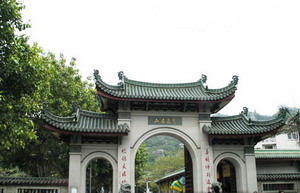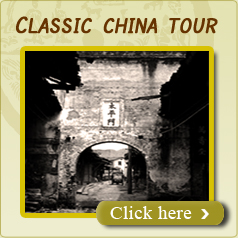Shuzhuang Garden

Shuzhuang Garden is exquisitely designed to reproduce the scene of Banqiao private villa with the characteristic of gardens on the Yangtze Delta. On the south foot of Sunlight Rock, the garden is built ingeniously between mountain and sea. The quiet hill and surging sea waves make people forget to go home. It creates infinite space by using a plot of slopes and take in all the sceneries that can be seen around the garden. This famous garden in Xiamen become a popular place for people who wants to enjoy a quite walk or admire the beautiful flowers seen here in this park.
Shuzhuang Garden was first built in 1913 by a wealthy Taiwanese named Lin Erjia, who modeled it after his father's villa in Banqiao, Taipei of Taiwan, Mr. Lin gave it the name "Shuzhuang" after his stylized name of "Shuzang". On the southside of the island, Shuzhuang Garden was once a private villa. It became a garden park open to the public in 1955.
It is divided into two parts-the Garden of Hiding the Sea (Canghaiyuan) and the Garden of Making-Up Hills (Bushanyuan). It was exquisitely designed to embody three important characteristics in gardening---hidden elements, borrowing from one's surroundings, and combining movements. The principle of hidden elements is embodied in the way the ocean remains hidden from view even if you walk right up to the garden gate. However, once you emerge from the bamboo forest, the seascape leaps into view.
By climbing the Tower of Tide-Viewing, you could get a terrific look at the sea. Borrowing from one's surroundings refers to cleverly using naturally available scenery. The garden also possesses another characteristic - the combining of movements. Its unique arrangement joins a rockwork that includes a maze of connected caves with fine pavilions on the side of the slope.
The gardenis divided into two parts, with "Canghai" facing the sea and "Bushan" against the hill, each having five scenic sights. Shuzhuang Garden has a good many sights, of which the most characteristic ones are:
Hiding elements: the ocean remains hidden from view even if you walk right up to the garden gate and enter it. The view was interrupted by a high wall. When you look back by chance, a plaque of "Cang Hai (Hiding Elements)" hanging high up on the inner side of garden gate comes into the view, and then you will burst upon the implication of hiding elements. However, once you get out through the Moon Cave Gate, the seascape leaps into view. By means of this device, first hiding and then revealing, wonderful results will be achieved.
Borrowing from one's surroundings: Taking advantage of the original slopes facing the sea, the reefs in the bay and the shape of the shoreline, the former garden owner built bridges and pavilions at various levels. He transformed a small bay to a seaside garden with a broad view and hierarchies by cleverly using naturally available scenery.
Shuzhuang Garden has many newly built facilities in recent years and its size has also been expanded. Especially the wave-listening pavilion is transformed into a "Piano Museum", displaying 30 famous and ancient pianos collected for a lifetime by Hu Youyi who is from Gulangyu living in Australia. It is "China's only and the world's first-class" treasure house of pianos, with nearly 100 precious historic pianos from throughout the world. The museum is an epitome of Gulangyu's musical culture and makes Gulangyu Island deserve the name of Piano Island and adds extra charm to it.





